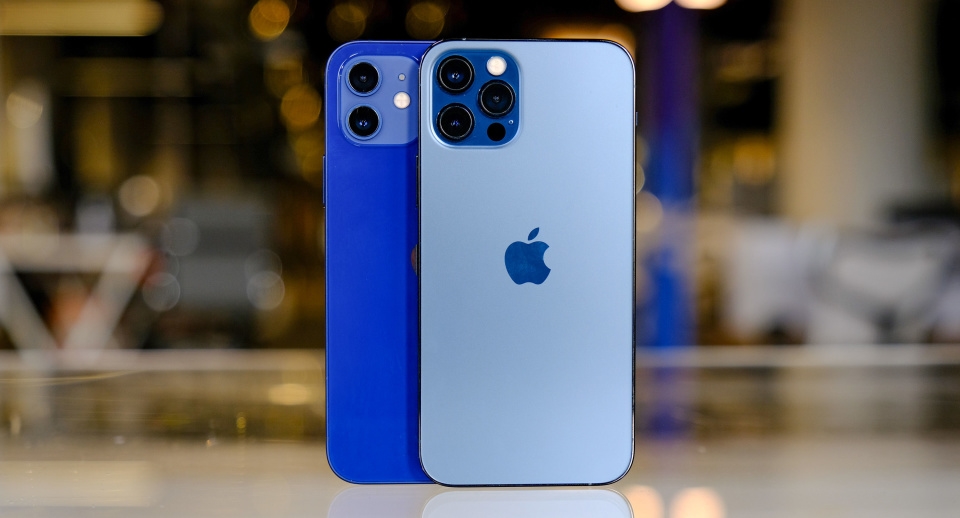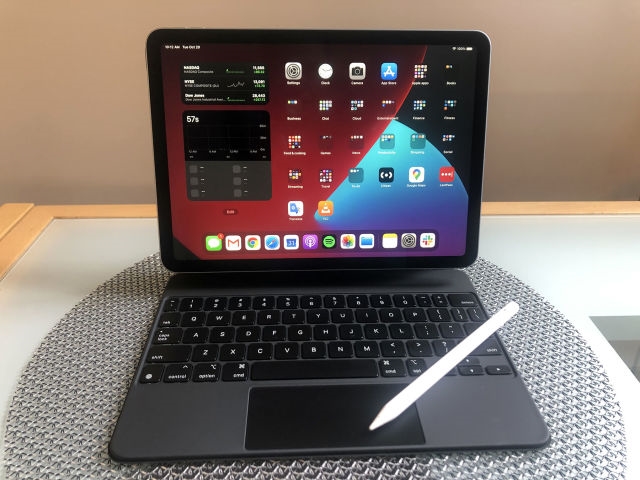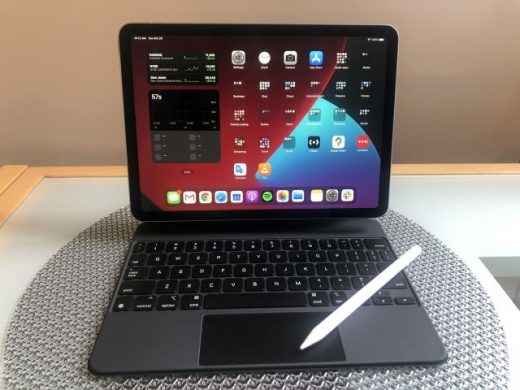In 2020, Apple’s best wasn’t its Pro devices

The coronavirus most definitely did not stop Apple from releasing a slew of new hardware in 2020. The company announced three updated iPads, five new phones, some crazy-expensive headphones and three new Macs with its new M1 silicon inside. Putting aside the outlier AirPods Max, there was a common trend across all this new hardware: Apple is blurring the lines between its so-called “Pro” devices and its less expensive, mainstream-focused products like the MacBook Air, iPad Air and iPhone 12 than ever before.
That’s a good thing if, like me, you’ve been scared off by the eye-popping prices of most of Apple’s Pro hardware lately. Take the iPhone, for example. When Apple released the iPhone X in 2017 (how has it been three years already?), it essentially pushed the price of the best iPhone from less than $800 to $1,000. Similarly, 2018’s major iPad Pro redesign introduced an $800 11-inch model, while the 12-9-inch version’s starting price increased from $800 to $1,000. In the case of both the iPad and iPhone, Apple sold less expensive options like the iPhone XR and iPad Air that were well-received but also cut some corners to hit a more palatable price point.
The 13-inch MacBook Pro is also available with the M1 — but this is perhaps the best example of the “Pro” tag not being worth the money anymore. The $1,300 MacBook Pro is very similar to the $1,000 Air except for a few slight differences. The Pro has a brighter screen, the Touch Bar (which, for many people, is a downgrade), slightly better battery life and improved speakers and microphone. It also has eight active graphics cores, compared to seven in the Air. If that concerns you, though, the $1,250 MacBook Air has all eight graphics cores available and double the storage space, for $50 less than the Pro. The Pro does have a performance advantage since its fan allows the laptop to run at peak speeds for longer — but the vast majority of people will do just fine with the Air.
That sums up Apple’s hardware strategy for 2020 pretty well. Before, products like the iPhone 11 Pro and iPad Pro were undeniably the best you could buy, but we still recommended most people purchase the less expensive options like the iPhone 11 or iPad Air. I followed that strategy for my own iPhone when I got the XR in 2018 instead of the XS. It’s a fine phone, but I’ve always been aware that it’s lacking in the camera and screen department (not to mention it’s a bit of a chunky boi). But this year, I have zero hesitation around getting an iPhone 12, and would recommend that phone to almost anyone I know over the Pro. The Pro Max makes sense for people who just want the nicest phone possible, or super-serious phone photographers, but everyone outside that niche is better off spending their money on the iPhone 12.
Of course, Apple being Apple, this won’t be the status quo forever. There are plenty of rumors talking about another major iPad Pro redesign coming in the first half of 2021, and Apple will surely update the 16-inch MacBook Pro with its own silicon before long as well. Chances are good that those next “Pro” products will be major steps forward that widen the gap between the Air and Pro lines again. As for the iPhone, though, the 12 series is still fresh to the market — so while the iPhone 13 Pro might have some more significant features to help it stand out, the 12 Pro is overshadowed by the plain old iPhone 12. For anyone who wants the best phone they can get without spending $1,000 or more, that’s a big win.

In the fall of 2020, however, Apple blurred the lines between its standard and Pro products in a major way. There’s less of a difference between the iPhone 12 and the 12 Pro than ever before, as Apple finally implemented OLED screens across all four of its new iPhones. The standard 12 and 12 mini also have significantly improved industrial design compared to the XR and 11 that preceded them, with tight screen bezels and a more comfortable fit in the hand. And even though 5G networking isn’t that significant now, it’s a feature that Apple could have easily saved for the 12 Pro. All four new iPhones will work on 5G networks, which means the less expensive models have a nice bit of future-proofing built in for the time when 5G really is worth paying attention to.
Apple pulled the same trick with the iPad Air. The 2019 version of this tablet was powerful and capable, but sported a tired design that Apple was clearly ready to move away from. The new 10.9-inch iPad Air, however, sports the same sleek, minimalist design as the iPad Pro. It skips the Face ID camera, but has Touch ID built right into the power button. The bezels are slightly larger than those on the 11-inch iPad Pro, and its screen doesn’t feature the fast 120Hz refresh rate found on the more expensive models. Oh yeah, it only has one camera and no LiDAR sensor. But it works with Apple’s 2nd generation Pencil and the new Magic Keyboard and has the potent A14 processor on board. Quite simply, it provides nearly everything the iPad Pro does for $200 less. Unless you really need that LiDAR Scanner, there’s basically no reason to go with the iPad Pro over the Air.
The lines between Apple’s professional- and consumer-focused Macs have even blurred a bit this fall, thanks to the new M1 processor. This somewhat shockingly fast chip is now available in the two cheapest Macs you can buy: The $699 Mac mini and the $999 MacBook Air. In our testing of the MacBook Air, we found it stunningly fast with outstanding battery life, putting it far ahead of most PC laptops in the same price range. Just two years ago, the MacBook Air was a tough sell thanks to some underpowered Intel chips that left it lacking compared to a similarly-priced MacBook Pro. Now, it’s fair to call the Air a tremendous bang for the buck, thanks almost entirely to how performant the M1 is.
(5)



